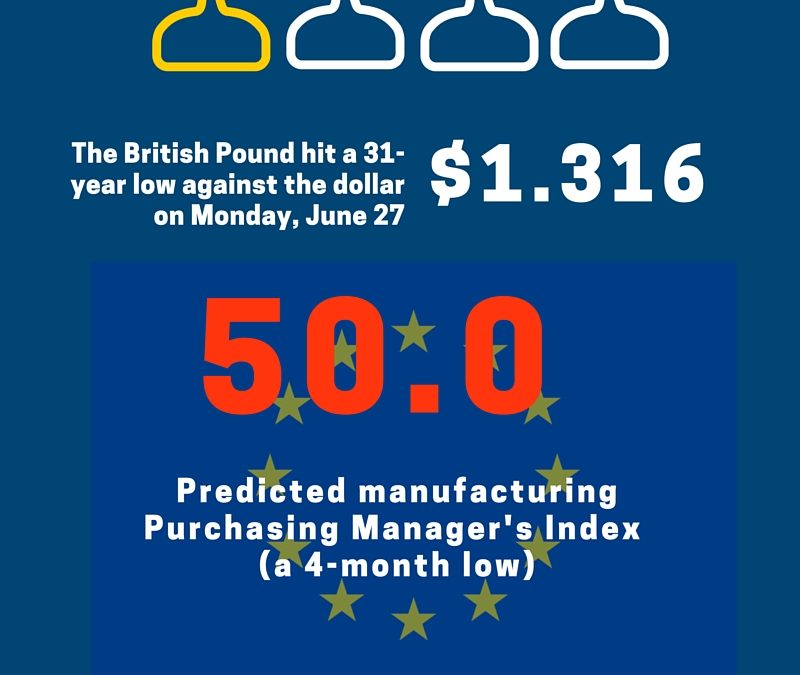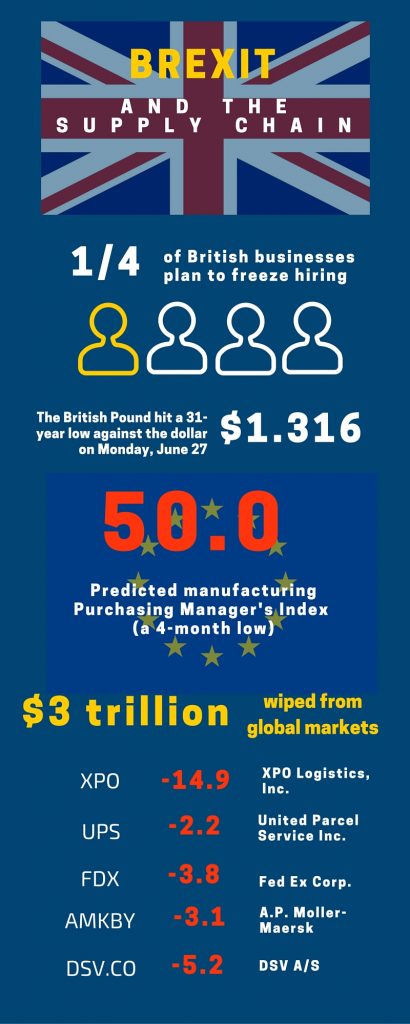
by Fronetics | Jul 14, 2016 | Blog, Strategy, Talent

When you work for the family business, being mindful about your professional persona can help preserve your familial relationships.
Family businesses can be a source of pride and fulfillment. But, often, they are rife with unprecedented turmoil. Working for a family business presents unique challenges that require special tactics to keep things professional (and to keep the peace).
For example, a performance review from your mom, dad, or sibling can be emotion-driven rather than fact-based. According to Harvard Business Review, fall outs with family over work can cause a tremendous amount of anger, sadness, and shame. So what is a family to do?
Here are five essential tips to working well with relatives:
1) Start your career elsewhere.
Or at least spend a few years with another company. If have only worked for your family’s organization, you lack a well-rounded perspective about the business. You are missing out on valuable training, alternate strategies and viewpoints, and unique experiences that would make you an asset to the family business. And that’s no slight to your company: Having several relatable job experiences creates better judgement skills. Also important, working in the “outside world” helps sow seeds of confidence, which are difficult to cultivate when working with a parent.
2) Set boundaries between family talk and work talk.
Separating work from home is key to having a healthy professional relationship and still being able to speak to your family at that weekend BBQ. Family members must learn to talk to one another as business partners. Establish rules for professional business interactions, like using a professional tone when speaking. Actively listen to hear the other, not to form your response. Don’t interrupt others who are speaking. Ask for clarification if you don’t understand the other person’s point of view. Let everyone participate equally.
3) Define your role and what you bring to the company.
Limit competitiveness and bad feelings by outlining clear job descriptions. Stay within the boundaries of your role to avoid stepping on others’ toes. Then bring all you have to that role. Picking up the slack for a fellow employee is annoying, but having to do it for a family member can cause anger and resentment.
4) Get an outside perspective regarding challenges and strategy.
Hire an outside strategic advisor to evaluate your business, how it fundamentally is working (or not working), and how the roles of the family members are either supporting success or creating greater challenges.
5) Set high expectations and stick to them.
No favoritism is allowed. Your parent or sibling should want you to succeed, but not through coddling. Expectations should remain high for all family members, as for every employee. Those that fall short should be subject to the same consequences as non-family.
Related posts:

by Fronetics | Jul 12, 2016 | Blog, Marketing, Strategy

Editor’s note: Sarah Collins is a summer intern at Fronetics Strategic Advisors. She is a rising sophomore at James Madison University, College of Business studying Marketing. You can find her on LinkedIn.
Aligning Sales and Marketing helps companies achieve 20% higher annual growth rates and improves deal closings by 67%.
“What do you think you’ll do with that?” is the question that, more often than not, succeeds me stating that I’m a marketing major. Uh, market? I guess? I’m the kind of student that usually has it all figured out. There’s always a game plan, so to speak, but this time around I had some figuring out to do.
That’s where Fronetics came into play for me. I went into my first intern experience looking at it as a giant learning opportunity. As I began, one of the first things that surprised me was that there were sales people in a marketing office. Little did I know, this is the ideal situation in the industry. Finally, the advice that a mentor gave me — “Take sales classes. You’ll thank me later.” — made sense. Marketing and Sales are like the Batman and Robin of the business world: Results are best when they’re working together.
What’s the reasoning behind aligning Sales and Marketing?
Through my research, I’ve learned that aligning Sales and Marketing goes back to a basic business concept, the buyer process: awareness, consideration, decision. The ultimate goal in business is essentially the same across the board. Sell and provide your product or service to your target audience. In order to achieve this, it’s best to focus on what the buyers’ immediate needs are at each individual stage of the buying process, and Marketing and Sales excel at different stages of this process.
It relates back to my economics class. Countries will always specialize in what they have the comparative advantage in because, when those two countries trade, they both end up with more than what they would have produced on their own. So Marketing and Sales specialize in their own stages of the buying process, and, in the end, they’re both better off.
HubSpot gives a great example. It wouldn’t make any sense for Sales to try to sell the product to a lead that has entered the awareness stage. At that point, the lead is only looking for specific information. It’s a strength to know where the customer is at and who is best fit to assist.
Why should you believe me?
According to ZoomInfo, only 8% of companies have strong alignment between their sales and marketing departments. Those that are aligned correctly statistically achieve a 20% higher annual growth rate and are 67% better at closing deals. As Articulate Marketing puts it, people are too informed in this day and age to tolerate even the slightest gap in what different departments tell them. The sales process has changed because the internet has given people access to so much information, and companies need to adapt accordingly.
Marketing and Sales are still two different entities.
While the two departments desperately need to be aligned well, there is no denying that they are, in fact, different. Sales generally has short term, tangible goals — such as new-client generation — while marketers are looking farther ahead at goals that aren’t quite as easy to measure.
The movie The Wolf of Wall Street offers a fantastic demonstration of how Sales works. Jordan Belfort (Leonardo Dicaprio) asks his friend Brad to sell him a pen. Brad simply says, “Write this down.” Mr. Belfort now has an immediate need for the pen. Salespeople have the ability to create this need for the buyer.
In an article by the Tronvig Group titled The Difference Between Sales and Marketing, James Heaton states that, in contrast to Sales, “Marketing should put forth an offer that meets the buyer’s needs right at the place and time of the sales opportunity. The most effective marketing is therefore about communication, not manipulation.” It’s when these differences between Sales and Marketing finally begin to work together that all the bases are covered, and the magic begins to happen.
How should companies align Sales and Marketing?
There are two main ways: strategically and physically.
Strategic Alignment
You can ask Sales and Marketing to collaborate in defining a lead generation strategy. This way the two departments aren’t getting frustrated with each other. Marketo highlighted three ways to do so.
- Lead Scoring can be incredibly helpful in understanding which leads are most interested and how good of a fit their company is for your business. These scores are only helpful if Sales and Marketing have worked together to create mutual understanding of the system.
- Lead Generation Metrics need to be understood by both. It won’t work if marketing doesn’t understand what is qualified as a SAL (Sales Accepted Lead) and SQL (Sales Qualified Lead), or if Sales doesn’t understand what makes up an MQL (Marketing Qualified Lead). A mutual understanding will increase efficiency because each department knows exactly what the other is looking for.
- Service Level Agreements can ease the process by outlining each phase of the cycle. For example, when an MQL is handed off to the Sales team, how long does the Sales team have to get in contact? What if they don’t at all? If the system becomes automated enough, you can expect a higher level of performance because the system will provide documentation on how someone became an MQL, and sales will have a record off their contact.
Physical Alignment, aka the Office
The physical layout of the office is also crucial. A study done in 2015 by CEB found that when employees are satisfied with their physical work space, they are 16% more productive and 18% more likely not to quit. Harvard Business Review found the open-concept office, having Sales and Marketing in the same space, resulted in more successful communications. One pharmaceutical company even found that the sales jump was more than 20%, $200 million in revenue.
The statistics are all there showing how detrimental or incredibly helpful aligning Sales and Marketing teams can be.
So have I exactly figured out the answer to my question? Not completely, but there’s still time. What I have learned is that the only choice to make regarding Marketing and Sales is that there is no room for competition between them, and I should definitely be mixing a sales class into a semester or two. Learning early that Sales and Marketing are both essential to each other and gaining experience in both skillsets could be just the competitive edge I need for my future. Lucky for me, there’s three more years of learning to be had.
Related posts:

by Fronetics | Jul 7, 2016 | Blog, Strategy, Supply Chain

Locally sourced foods are popular with consumers. But for restaurants, the shorter supply chain is plagued by food safety concerns.
Shorter does not mean simpler when it comes the food supply chain. In fact, working with small local producers often introduces a whole new set of challenges, particularly in regards to food safety and preparation.
Take, for example, the chain restaurant Chipotle, which boasted a menu supported by locally sourced foods. Last year, the chain was linked to outbreaks of E. coli, norovirus, and salmonella. Today, shorter food supply chains are under new scrutiny because of safety concerns.
Professor John Quelch of Harvard Business School and T.H. Chan School of Public Health recently authored a case study on food supply chain challenges. He summarizes his findings in an interview with the Harvard Business Review, discussing the major obstacles to local sourcing, how to manage them, and the changing appearance of food supply chains as we move forward.
Here are some highlights:
When there are fewer intermediaries between supplier and restaurant, the supply chain is actually more complex and fragmented, and safety is harder to control.
Essentially restaurants must trust numerous individual suppliers rather than having a standard quality control procedure for a manageable number of specific food sources. McDonald’s, for instance, gets chicken for all its locations from a handful of controlled sources. A nationwide chain that is sourcing locally, on the other hand, will have as many suppliers as there are locations, in theory. This means they may not be able to monitor every one on site.
Sources that mass produce have sophistication and experience in food testing that small local growers lack.
When you source food locally, inspections are on an honor system with that producer. But, the producers may lack the knowledge to assure the highest level of safety. They may not have experience with USDA inspection procedures, and their internal inspection systems may not be as well developed as a company with global operations.
Establishments that want to source locally need to factor in costs of their own safety protocols.
Yes, they may need to charge more from the consumer to balance this, but the safety checks are a must. It does not need to be done in-house either. According to Quelch, a number of very competent, existing independent food testing companies can assure safety and quality. Remember also that consumers are often willing, and expect, to pay more for locally sourced foods, particularly if they are organic and fresh.
Supply chain transparency is a must.
Many larger supply chain companies already have tracking systems in place, but such transparency is lacking at the local level. If an incident of illness occurs from a food supply, the establishment needs to be able to determine what caused it and where it was sourced from. They should be able to hone in on the source as fast as possible, so the rest of their supply chain is left out of the equation and operations are not shut down.
The future will blend global and local suppliers.
A minority of consumers will still have a passion and demand for locally produced, farm-to-table food. But, many consumers will remain price-sensitive, looking for safe food at a reasonable price. So, consolidation will probably occur through partnerships and mergers of global and local suppliers. Large food processing companies may start using local sources to make branded products, which are sourced closer to the target consumer.
Related posts:

by Fronetics | Jul 6, 2016 | Blog, Logistics, Strategy, Supply Chain, Talent

The talent gap represents a professional opportunity for motivated individuals looking to advance their supply chain career.
The global supply chain is continuously evolving, offering new opportunities as demands shift and new technologies are born. But how do you evolve with it?
The key is knowing where to look and how to leverage your talent and skills to fit demand. Opportunities are abundant now, but they are also growing, according to the U.S. Roadmap for Material Handling & Logistics. It predicts there will be 1.4 million new jobs in the logistics and supply chain field by 2018.
In fact, the number of supply chain employees is expected to double by 2017, with a high demand for managerial talent. That equates double the opportunity for you to move your career forward!
Here are 5 key actions to advance your logistics or supply chain career:
1) Consider all the skills in your wheelhouse.
Evaluate and take stock of your skills and experience. Know how to articulate exactly what you bring to the table when you consider a new position. Your skills may also be highly transferable, so it is wise to be open to new opportunities. Finally, expand those skills with certifications that will give you a competitive advantage. Look for certifications that enhance your operations and supply chain management skills, like those through the American Production and Inventory Control Society (APICS).
2) Network within the industry.
Employers seeking supply chain talent have to be able to find you. Join associations like APICS, the Institute for Supply Management (ISM), and the Council of Supply Chain Management Professionals (CSMCP). You will gain access to career advice and be a part of a network of supply chain professionals. Join online interest groups and professional networking platforms such as LinkedIn. Follow industry blogs and make connections that relate to, and promote, your career aspirations.
3) Expand your software and technology skills.
This is a constantly evolving area in the supply chain, with new software emerging and a growing demand for talent that knows how to use it. Educate yourself within the software and technology space, and you will open many new doors of opportunity.
4) Know how to promote your soft skills.
Do you have problem-solving experience? A background in communication? Leverage those skills on your resume. Recruiters typically have a list of about 30 job skills that they look at when reviewing job candidates. But soft skills take priority because they produce the most successful new hires. These include: knowledge of basic business ethics, problem-solving acumen, and solid communication skills.
5) Let your differences shine.
You may not see much young or female talent in today’s supply chain industry, but don’t let that discourage you. In fact, this signals opportunity. Many companies are ramping up efforts to recruit (and keep) young talent. And women tend to be strong in many of the soft skills needed for the future of SCM. According to Shanton J. Wilcox, vice president, North America, and lead for logistics and fulfillment at Capgemini, “Many so-called tactical jobs will be replaced by positions requiring more interpersonal and relationship management skills.”
With the present challenges in securing supply chain talent, recruiters are actively searching for specific skills and new employees. You can answer to this demand if you know how to leverage, expand, and promote your skill set to the right people.
Related posts:

by Fronetics | Jul 5, 2016 | Blog, Data/Analytics, Marketing, Social Media, Strategy

Gauge the effectiveness of your social media strategy using these four data points in Google Analytics.
Measuring the impact social media has on business is important to those in the logistics and supply chain industries. In fact, a recent Fronetics survey found that 81% of respondents reported that information on proving social media ROI would be helpful to their companies.
You can waste a lot of time trying to track down information on your various social accounts, or you can find all the most pertinent information with one tool. The best part is that your company is probably already using it. (And it’s free!)
Google Analytics is an incredible tool for businesses large and small looking to gain insight into the who, when, and where of their web traffic. And while it may seem intimidating to the novice, it’s very easy to use once you know where to find what you’re looking for.
Step 1: Look at where your traffic is coming from.
Is it social media? Google Analytics will provide an overview of the overall traffic sources that deliver visitors to your website. Included in this report will be traffic from social media. This high-level view of your traffic that includes:
- Search (people clicking through from Google or Bing)
- Social (Twitter, Facebook, etc.)
- Direct (people typing your site in their browser or bookmarks)
- Referral (people clicking links from other sites to get to you)
- Email
- Paid search
- Other
To access this report in Google Analytics, go to Acquisition > All Traffic > Channels.
Go a step further and review the volume of traffic that comes from specific social media networks, by clicking on Acquisition > Social > Network Referrals.
It’s important to have a diverse mix of traffic sources, which should be reflected in the traffic sources report. If you find that a large portion of your traffic comes exclusively from one source, especially if that source is not social media, it is time to reconsider your social media strategy. Similarly, if you are finding that one network is driving most of your traffic, you should look into when and what you are posting in the non-performing channels.
Step 2: Determine revenue derived from posts.
Make sure to include links back to your site when you post on social media so that Google Analytics can track and analyze them. You’ll want to add a UTM code (aka UTM parameter), which is text added to the end of a URL (after the ?) to identify the success of a campaign. As an example, the UTM code is boldface below:
“https://fronetics.com/microsoft-linkedin-product-synergies-floor-b2b-marketers/?utm_content=36244275&utm_medium=social&utm_source=facebook”
You can set unique UTMs for all of your social media, per channel, or even per update. By analyzing your different UTM parameters, you can determine which URLs are most effective in driving users to your content.
Set UTM parameters through Google’s URL Builder. once your parameters are set, you can go to Acquisition > Campaigns > All Campaigns to see the revenue from any individual UTM tag, like a post or tweet.
Step 3: Look at how your content is being digested.
Analytics allows you to see how long a visitor stayed on your site, (use the Duration goal to find out). Examine how content resonates with the social media audience by using Set up the Pages/Screens per Session goal, or learn how many times visitors from social media play website video with Create an Event goal for specific tracking.
Step 4: What is social media bringing you in conversions?
Google Analytics has conversion funnel reports that show how much social media is contributing to conversions. To set up conversion funnels in Google Analytics:
- Use the Goals section and connect any type of conversion event.
- Access your funnel report through Conversions > Multi-Channel Funnels > Top Conversion Paths.
These four insights from Google Analytics can help you determine how effective your social media strategy is in terms of traffic, direct revenue, visitor behavior, and conversions. Use this information to continually refine your strategy and get the most out of your social media presence/
Related posts:


by Fronetics | Jun 30, 2016 | Blog, Current Events, Logistics, Strategy, Supply Chain
 As uncertainty pervades following Brexit, experts speculate about the impact a divorced U.K. and E.U. will have on the global supply chain.
As uncertainty pervades following Brexit, experts speculate about the impact a divorced U.K. and E.U. will have on the global supply chain.
As the Brexit vote roils markets across the globe, uncertainty looms in the air for many businesses. Even U.S.-based organizations without operations or suppliers in Europe are feeling the “significant economic repercussions” of the U.K.’s decision to leave the E.U.
Economists have been scrambling to determine the full impact of the referendum. It seems clear that all aspects of the supply chain will be affected in some way. But we won’t have a clear picture of precisely how prior to the conclusion of the two-year period of negotiation on Britain’s exit terms. Some experts speculate that it could take up to 10 years for new trading relationships with various countries to play out.
For now,“the overriding message for the European logistics and supply chain industry is one of ‘business as usual,’” says Transport Intelligence’s CEO, Prof. John Manners-Bell. “It will be in everyone’s interest to ensure that there is as little disruption to the movement of goods throughout the region as possible.”
In the meantime, here are 8 of the top analyses of Brexit’s impact on the logistics and supply chain industries.
Life after BREXIT: What are the UK’s options outside the European Union? Centre for Economic Performance, London School of Economics and Political Science
Logistics Executives Say Brexit Will Rattle European Supply Chains Wall Street Journal
What Is the Impact of Brexit on My Business? Uncertainty Ripples Through the Supply Chain Forbes
Brexit, the Next Big Disruption for the Supply Chain? Supply Chain 247
Five Models for Post-Brexit UK Trade BBC News
Brexit Wins – What’s Next for the Procurement Industry? Digital Supply Chain
Procurement, Supply Chain and Brexit: Obvious and Less Obvious Considerations Spend Matters
Brexit to Boost U.S. Exports to Asia, Depress Activity to Britain and Europe, Economist Says DC Velocity
Related posts:









 As uncertainty pervades following Brexit, experts speculate about the impact a divorced U.K. and E.U. will have on the global supply chain.
As uncertainty pervades following Brexit, experts speculate about the impact a divorced U.K. and E.U. will have on the global supply chain.